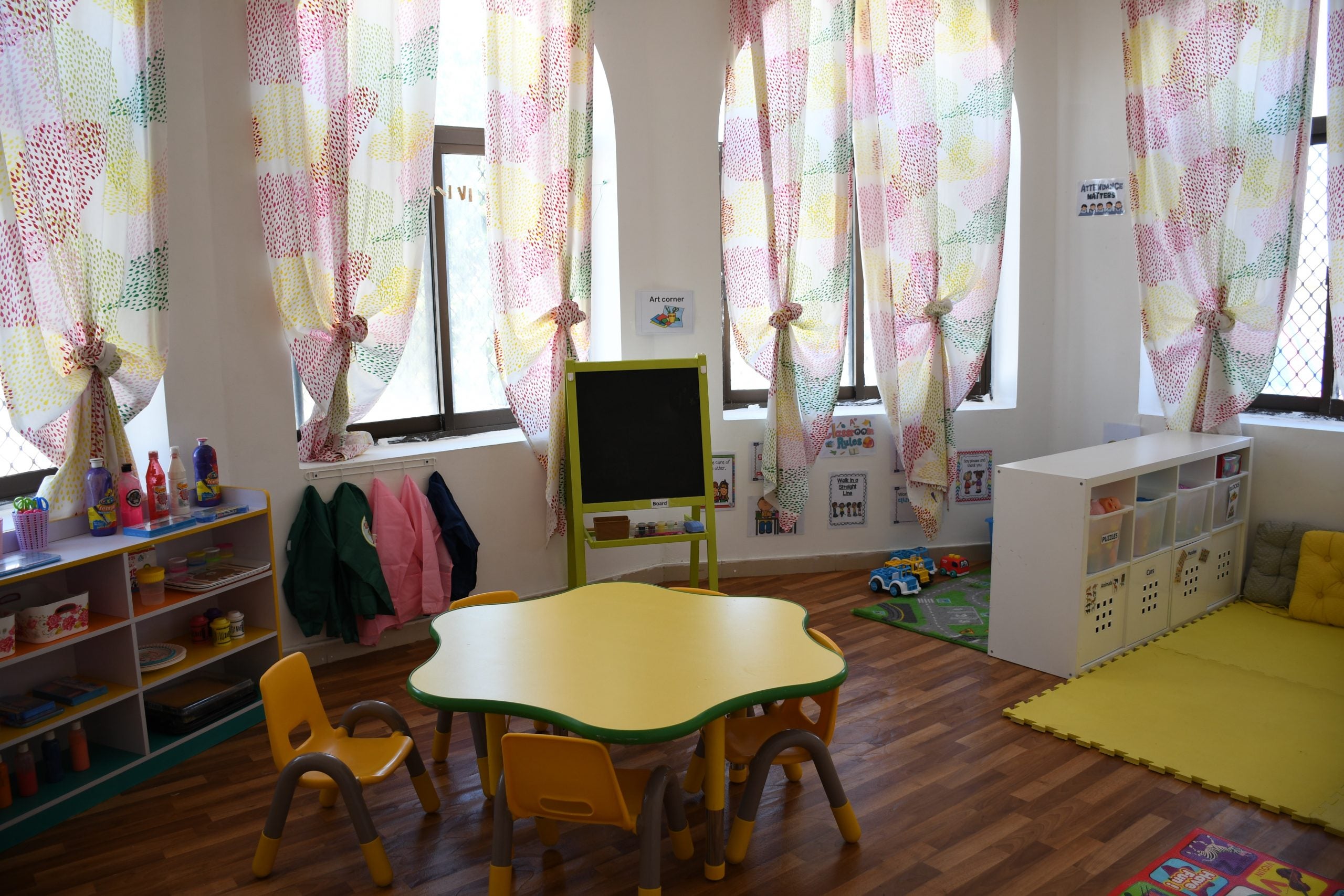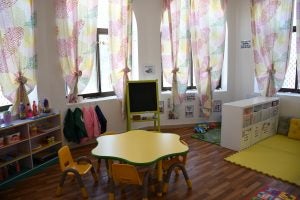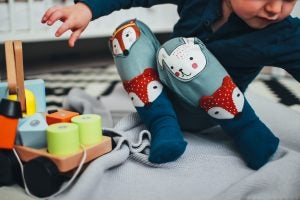It’s hard for us as hearing and sighted people to imagine what it would be like to have a dual sensory impairment. As I get older and my hearing and vision change, I am amazed at how dependent I am on my glasses! Sometimes when I go to the store I might come home with something different than what I thought I had bought. If small changes in vision and hearing can make such a big difference, what must it be like to be deprived of both auditory and visual information from birth? How can a child with deaf-blindness learn about people, places, and things in their environment?
Children with DeafBlindness get incomplete or distorted information from their two main distance senses, vision, and hearing. If the child’s vision and hearing losses are severe, the sense of touch may become his or her most useful sense. The sense of touch can be used to determine the shape and size of objects, what they are made of etc. Later the sense of touch may need to become the child’s access to language through object and touch cues and even later through reading Braille.
Barbara Miles, the author of “Talking the Language of the Hands to the Hands” describes the importance of the sense of touch to the child with deaf-blindness:
“… think of the hands of the extra role-play for individuals who are deaf-blind. Their use in communication expands and for many touch compensates for other senses. In addition to their usual role as tools, they become “useful and intelligent sense organs, allowing people without sight and hearing to have access to objects, people, and language that would otherwise be inaccessible to them” (Miles, 2003).
Considering how crucial the sense of touch can be to a child with deaf-blindness, we need to be very careful to develop this sense with care and sensitivity during the first two years of life and determine never to use methods that might develop a resistance to touch in the child.
One way to develop a very young child’s skills around touch is to allow him or her to explore independently in active learning areas. Active learning areas are play spaces where items are kept in predictable places, are within reach of the child, and take into consideration the child’s preferences for what they like to touch and interact with.
Techniques that might be detrimental to a child developing independent tactile exploration skills include the “hand over hand” method where the adult takes the child’s hands and moves them for the child. One of the most important strategies when working with children with deaf-blindness is to “do with not for”.
“Hand-under-hand” is a much less invasive technique that allows for independent action and participation from the child. Here is a quote from the Family Connect website that describes how to use a “hand under hand” technique.
“When you use the hand-under-hand technique, your hands perform the activity while your child’s hands rest on top of yours—in this way, your child can feel what your hands are doing. If the activity is new to your child, and she is hesitant to try it, she may feel more secure touching your hands rather than the unknown object or activity. Also, because her palms are on your hands, she’ll be able to focus her energy on feeling the movements of your hands. She may also feel more comfortable and in control because she can freely remove her hands if she wants to. As you perform the activity, verbally describe what you are doing with your hands.”
Another way touch can be used in children from birth to two is as a bridge to language. If a young child is currently unable to connect a sound or a picture to an object, person, or an activity, they may be able to learn to connect an object cue or a touch cue to a person, an activity, or an object and thereby take their first step in developing symbolic language.
A touch/object cue for a person is called a “name cue”. Each person who interacts with a child with deaf-blindness should have their own unique way of greeting the child and have an object cue such as a ring or watch that they always wear and let the child feel to help the child identify them.
A touch cue is a touch that is done in the same place and the same way right before you do something with the child such as touching the child below the ear right before you put on his or her hearing aid. An object cue is a concrete object or piece of an object from a daily routine used to represent that routine for example a diaper is usually the cue for going to change the child’s diaper. These are called Anticipation Cues.
Combining a touch cue with an object cue gives the child with DeafBlindness more information to aid understanding (giving the child the diaper to feel while making the sign for a diaper on the child’s body). It lets the child know that something familiar is about to happen and it allows the child to remain calm and helps him feel safe.
The child’s IFSP team can come together in a joint effort to develop appropriate touch/object cues for a child and everyone should do them in the same way, repeating them as much as possible throughout the child’s day. The object and touch cue should be presented to the child before the child is taken to the activity so that the child can anticipate what is going to happen.
Here is an example of a child’s Touch/Object Cue Chart. The chart should be shared with the child’s IFSP team, family, and other caregivers:
| Routine | Object Cue | Touch Cue | Olfactory Cue |
| Bath Time | Wash Cloth | Rub hands gently up and down the body to make “bath” sign | Soap smell |
| Eat | Spoon | Touching her mouth | Smell food |
| Stand up | Tap Shoulder with 2 fingers | ||
| Diaper change | Diaper | Sign for a diaper made on her body | |
| Going out in the Car | Let her feel the keys | Make a sign for car hand-under-hand
(steering a car) |
In summary, It is very important to develop sensory efficiency in all senses for a child with dual sensory impairment. The sense of touch can be especially important sense for these children. The child’s tactile abilities should be developed through independent exploration, in defined learning environments, and in hand under hand exploration with trusted others. Anticipation cues should be developed when needed using as many senses as possible and all caregivers should use them the same way.
Have you used some of these types of cues with your child or student? Please let us know about some of the ways your child or student uses touch to gain an understanding of their world. Share in the comment section below!
More Information on Touch:
Barbara Miles “Talking the Language of the Hands to the Hands”
https://www.nationaldb.org/info-center/talking-hands-to-hands-factsheet/
Paths to Literacy, Importance of Touch
https://www.pathstoliteracy.org/blog/importance-touch
Active learning Spaces, Lilli Neilson
https://activelearningspace.org/
Touch Cues, Chris Russell Presentation
_________________________________________________________________________________________
Patty Dischinger, M.Ed.
Technical Assistance Consultant
East Carolina University Teacher Support Program for Learners with DeafBlindness
dischingerp19@ecu.edu
Photo by Atikah Akhtar on Unsplash
Photo by Markus Spiske on Unsplash



